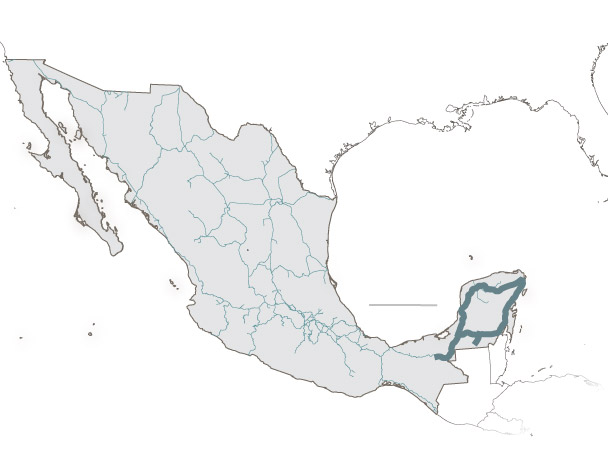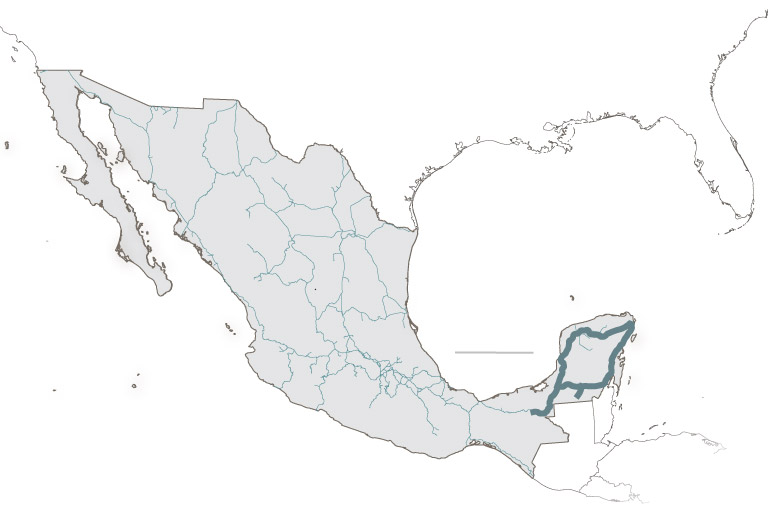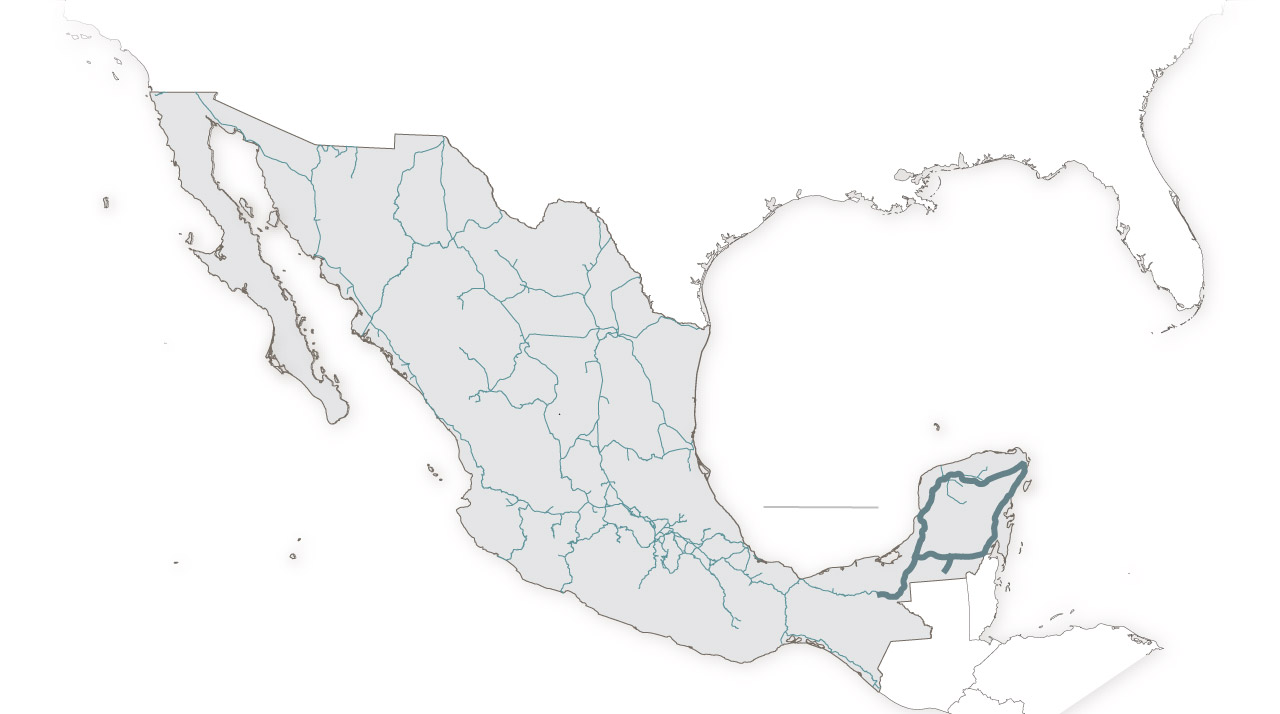Testing out Tren Maya, Mexico’s new train that connects the Yucatán
7 min readMÉRIDA, Mexico — It wasn’t until I stepped aboard Mexico’s shiny new train myself that I truly believed the Tren Maya existed. Up until that point, between a confusing booking process and reports of stranded passengers and construction problems, I felt that it was possible the entire project was nothing but a Potemkin train.
If there was any hope it existed, it was from the bad news: the train had already attracted headlines for injuries to workers, rushed construction and damage to the fragile jungle of the Yucatán Peninsula and archaeological sites, despite promises from the Mexican government to avoid any harm.
The new train opened its first section in December 2023 and was scheduled to be fully complete in February, but that’s since been pushed to June. When finished, it will span about 970 miles and link five states in southeastern Mexico in a Q-shaped loop — Campeche, Yucatán, Quintana Roo, Chiapas and Tabasco. Construction is still underway on tracks covering most of that distance, including a line running about 26 miles south from the Cancún airport to the popular beach town of Playa del Carmen. The inaugural train rolled through that section Thursday.
During my early February visit to the region, only one segment of the total route was in reality complete — a line connecting the busy tourist hub of Cancún to Campeche via the busy midsize city of Mérida. At the time, the train was making just a couple of runs per day, which is a fraction of its promised frequency. It’s ostensibly geared toward visitors, so being a lover of train travel, I eagerly incorporated it into my travel plans. That, it turned out, would be easier said than done.
Here’s what it was like booking and riding the train from Mérida to Valladolid.

UNITED
STATES
Tren Maya
route
Existing
railways

UNITED
STATES
Tren Maya
route
Existing
railways

UNITED
STATES
Existing
railways
Tren Maya
route
The booking process
The beauty of taking a train is that booking a ticket and boarding the train is a much simpler process than flying. That’s not the case for the Tren Maya, which is complex.
I first tried booking a ticket from my home in Canada in the weeks before my trip. There is just one official website for booking tickets — the service’s X account warns of scams — but the site is less than user friendly. Tickets only come available one week before and are frequently sold out. (This week, there were no tickets available, for any segment of any route that I checked.)
One week before my arrival in Mexico, I did manage to snag what I thought was a reservation. Alas, it was not to be: Booking a ticket is actually a two-part process, and I had only completed the first part. Once a booking is made, you have to make a payment online within half an hour, but the site’s automatic redirect to the payment page didn’t work, no matter how many times I tried from Canada. I gave up and decided to book while I was in Mexico for a different leg of my trip.
A week later, I was in my hotel in Mérida, determined to make this journey happen. When I found two open seats, I jumped on them, and — voilà! — was redirected to the payment page. The payment went through, and I received a receipt moments later. But, still no tickets. Those would take another nerve-racking 13 hours (did I just get scammed?) to arrive in my email inbox.
The lessons I took away from this experience: Booking within Mexico seems to be the easiest, if not the only, way to complete a reservation. The website does in fact provide tickets eventually, but planning a week ahead helps. So does having a grasp of Spanish; there is no English-language website or support, though you can use the translate function of your browser. I also didn’t see ticket kiosks in the city centers of Cancún, Mérida or Valladolid, where I spent time throughout my trip.
Ticket pricing
Prices for different journey lengths vary based on the cabin choice — tourist or premier — and are higher for international visitors than for Mexican nationals.
When I booked my tickets, a three-and-a-half hour, one-way trip from Mérida to Cancún airport cost about $90 for premier class or just under $60 for tourist class, for an international visitor. Tickets are 25 percent less for a Mexican national. With all the uncertainty and wanting to limit my chances of being stranded, I decided to book a premier ticket on the shortest leg I could — between Mérida and Valladolid — for about $50.
The station and boarding
With my ticket PDF on my phone, I caught a $15 Uber from central Mérida to the brand-new station in Teya, on the city’s outskirts. My Uber driver, Gabriel, mentioned that he was taking the train to visit family in Cancún in July. As I arrived at the station, it appeared that the majority of the users of the train were in fact Mexican families. The lack of international visitors riding has raised concerns, local media has reported.
Construction at the station was still ongoing. Crews were putting the finishing touches on everything from the landscaping to platforms, while the security screening machinery sat next to the boarding area, ready to be plugged in. The station is sparkling and airy, with a few little shops selling snacks, but there is no air conditioning, phone charging stations or WiFi.
With the departure approaching, an announcement in Spanish echoed through the station and we were ushered smoothly and efficiently onto one of the station’s six platforms, the only one that appeared to be operational at that point. There are no elevators in sight, but instead many stairs and escalators. Combined with a wide gap between the platform and the train, it’s safe to say that accessibility is not yet a consideration.
The departure time came and went, with no sign of the train, and I feared the train might not come. But then, 20 minutes later, the security officers fanned out across the platform and fixed their eyes into the distance where the train was winding into view.
The train journey
The train is divided into two classes: tourist and premier, which are distinguished mainly by the amount of elbow room. Premier compartments have three seats to a row, while the tourist compartments have four and more options for seats that can face one another, which is great for small groups. (A third, sleeper class, will eventually operate on the longer journeys.) The cars are immaculate, comfortable and quiet; the train operates so smoothly as to be almost unnoticeable when it moves.
The cars were outfitted with air conditioning and the seats have USB plugs for your devices; and the temperature is kept at a pleasant, cool level. There is WiFi, but it didn’t appear to work at a level sufficient to do much of anything.
After one or two stops, at semi-functioning stations near archaeological sites between Mérida and Valladolid, a cart rolled through the premier cabin with complimentary (but unappetizing) sandwiches. Luckily, other snack and drink options, including alcoholic drinks, were available in the bar car. A full menu of food options is expected to be offered later, but it wasn’t available yet. When I turned down the sandwich, I was instead offered a cup of fresh papaya, watermelon and pineapple, which I gladly accepted.
The atmosphere on the train was bordering on festive: Families took selfies as the train pulled away from its various stops, and those who had just disembarked waved to everyone aboard. The sense was that this train was opening up new possibilities for the region, much of which is served by poorly maintained roads, if there are any at all.
A friendly Pomeranian wandered the central aisle — a reminder that the train allows small dogs — as the train rolled past tiny villages and henequen plantations, and near enough to archaeological sites for quick access — but unfortunately not for a view.
Pulling into the station near the region’s best-known archaeological site and new Wonder of the World, Chichén Itzá, I felt like the kids locked in their Jurassic Park jeep, craning my neck to spot the attraction from the ride. There was no sign of the towering Kukulcan pyramid on the horizon, however, and I had to remind myself it’s not a theme park ride, it’s transit — intended to deliver you to the places where you can experience the region, not to be the experience itself.
The train glided into a station north of Valladolid just behind schedule, as the sun was about to dip below the horizon. A bus waited to whisk us downtown for about $2 a head, completing the short journey.
It was hard in retrospect to reconcile the comfort and confidence of the train experience itself with the labyrinthine process of booking — and the ecological destruction its construction has wrought. Sitting down on the train, I had the sense of having tumbled through the surf, certain I would drown, only to be deposited gently on a pristine shore with a drink in my hand.
If I were returning to the Yucatán Peninsula, I’d avoid incorporating the train into my plans for now. The booking system is too unreliable and support is too sparse for it to be a predictable or pleasant part of a vacation. I also have a nagging feeling that my uneventful, mostly on-time journey was something of an outlier.
But if I were to return sometime after the dust settles over the next few months — and I hope to — I’d gladly hop on another ride. When the booking system bugs and construction chaos are worked out, the Tren Maya feels destined to become a must-do for any traveler, foreign and domestic alike, eager to explore beyond the resorts of Cancún.
Jimmy Thomson is a journalist based on Vancouver Island.



